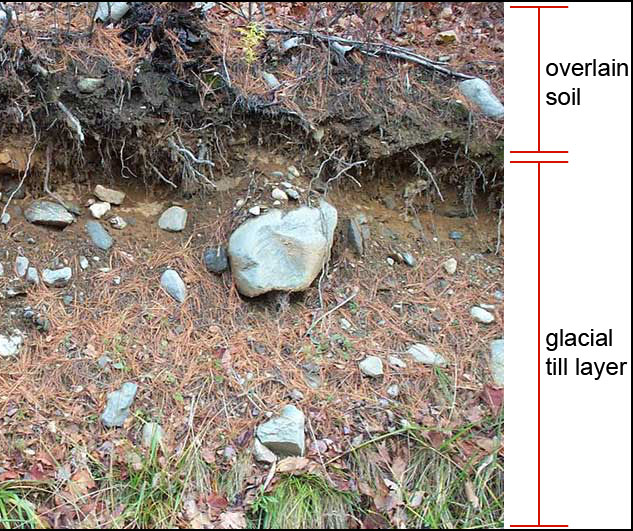Have you ever been walking through the woods or driving along a wooded country road and spotted a rock wall seemingly heading off to nowhere? Well, if you are currently located in a part of the world that was once covered by glacial ice, you certainly may have! In New England especially, where I’m currently located, rock walls are everywhere. These mysterious walls seem to pop out of the trees like echoes of a distant past. It looks like someone built them…but who? And why are they there?

Before we get into the geology, we need to consider the history! Rock walls were built during the late 18th and early 19th centuries1, when farmland was more abundant than the cities and towns of our lives today. Farmers needed a way to delineate their farmland from their neighbors. So, these industrious farmers used the rocks that they found as they were plowing their fields.
But where did the rocks come from? New England, along with other regions of the Northern United States and throughout Canada, was covered by glacial ice during the Quaternary period of geologic time (from approximately 2.6 million years ago to the present). Glacial ice from the Laurentide Ice Sheet was present as far south as New York City and parts of New Jersey as recently as about 16,000 years ago2! As glaciers grow and accumulate more ice, they will cover more and more of the land surface. When glaciers move across the land, they scour rock that is exposed along the surface and pick up rock pieces that vary from the size of sand grains to the size of boulders that can reach masses as large as 18,000 tons (check out “Big Rock” in Alberta, Canada).
As the glaciers begin to melt, the rocks that are frozen in the ice are dropped, leaving behind mixtures of different sized rocks known as glacial till. It is glacial till that the farmers would pluck from their fields centuries earlier and use to make the rock walls around their farms. Waste not, want not! Over the years, the cleared farmland may have been replaced by forest, but the rock walls still stand guard as a testament to geological and human history. So the next time you are in a wooded area and come upon a lonely rock wall, take a moment to imagine the power of glacial ice and resourcefulness of early farmers that came together to make that very wall exist.

Want to check out some more resources? The Stone Wall Initiative through the University of Connecticut is an awesome source for information about the rock walls particularly found in the Northeastern United States: https://stonewall.uconn.edu/
1The Stone Wall Initiative. University of Connecticut, https://stonewall.uconn.edu. Accessed April 6, 2021
2Dyke, A. S., et al. “The Laurentide and Innuitian ice sheets during the last glacial maximum.” Quaternary Science Reviews 21.1-3 (2002): 9-31.
3Cohen, Phoebe. “Geological History of Greenwich, CT”. GEOHISTORIES Co-Evolution of Earth and Life/GEOS 101 at Williams College, WordPress, March, 15th, 2014, https://sites.williams.edu/geos101/new-england/geological-history-of-greenwich-ct/. Accessed April 6, 2021.
4 “Landscape Lenses”. Burlington Geographic: University of Vermont Accessed April 6, 2021.




Great info. Look forward to future posts.
Congratulations Kristen. Great article and great idea. I LOVE stone walls esp the ones that bordered our property in CT. No rocks here in NC.